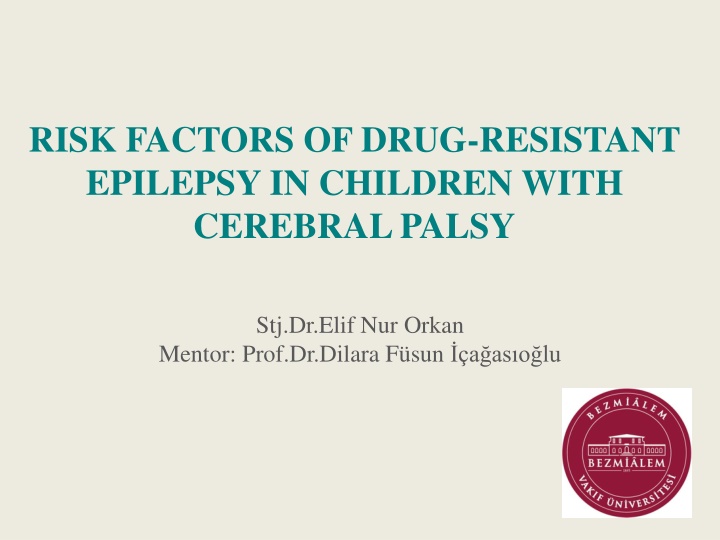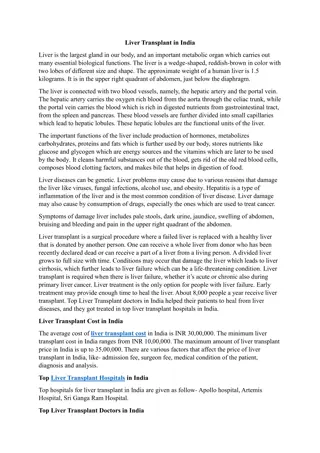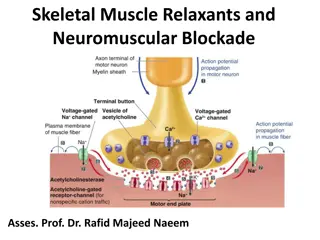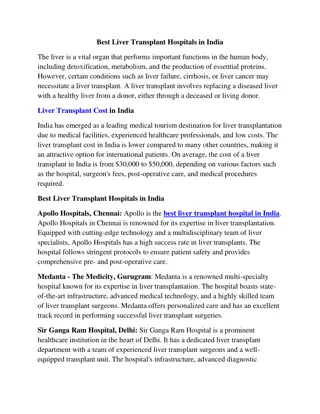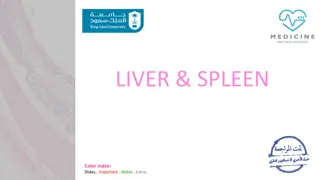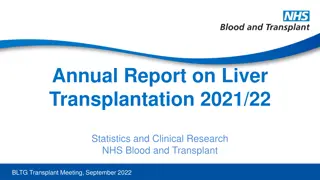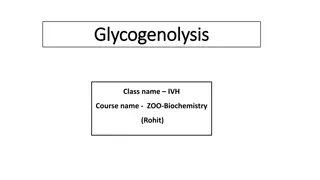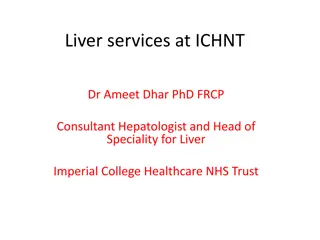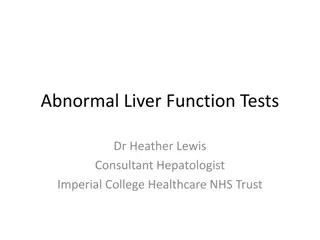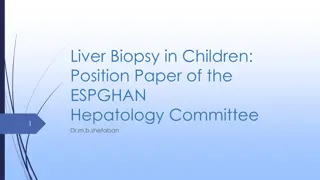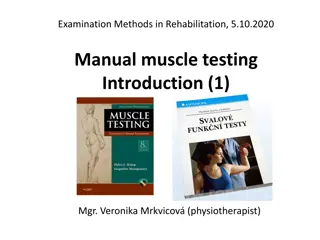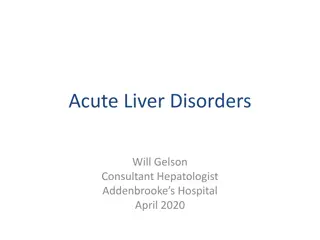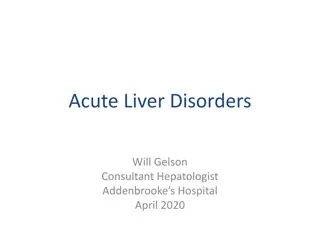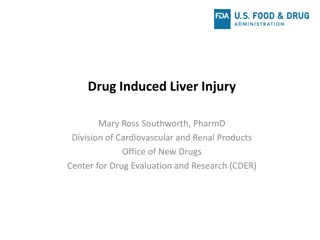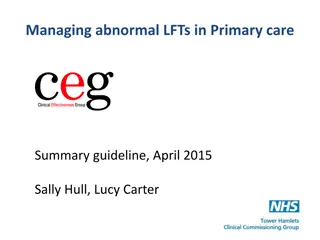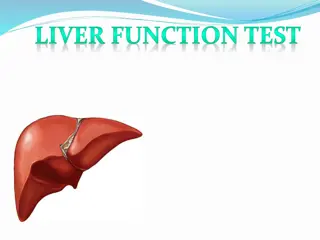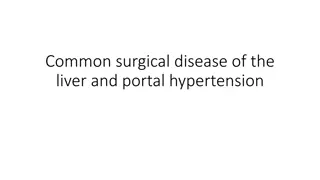Glycogen Metabolism in Muscle & Liver
Glycogen is a vital carbohydrate storage molecule found in skeletal muscle and liver. This article discusses the structure, location, functions, and metabolism of glycogen. It covers glycogenesis (synthesis) and glycogenolysis (breakdown), as well as key regulatory elements. Understanding glycogen metabolism is crucial for insights into energy storage and utilization in the body.
Download Presentation

Please find below an Image/Link to download the presentation.
The content on the website is provided AS IS for your information and personal use only. It may not be sold, licensed, or shared on other websites without obtaining consent from the author.If you encounter any issues during the download, it is possible that the publisher has removed the file from their server.
You are allowed to download the files provided on this website for personal or commercial use, subject to the condition that they are used lawfully. All files are the property of their respective owners.
The content on the website is provided AS IS for your information and personal use only. It may not be sold, licensed, or shared on other websites without obtaining consent from the author.
E N D
Presentation Transcript
RISK FACTORS OF DRUG-RESISTANT EPILEPSY IN CHILDREN WITH CEREBRAL PALSY Stj.Dr.Elif Nur Orkan Mentor: Prof.Dr.Dilara F sun a as o lu
INTRODUCTION Epilepsy is a common neurological problem in children with cerebral palsy. Anti epileptic drugs are the basic of therapy and the majority of patients respond to this treatment. However, approximately 20-40% patients do not respond. Resistant epilepsy is defined as the failure of adequate trials of two tolerated, appropriately chosen and administered anti- seizure drugs to achieve seizure freedom.
In patients with resistant epilepsy, the frequency of seizures affects negatively quality of life and cognitive function. Identifying and preventing risk factors involved in the development of resistant epilepsy can help improve the life quality of patients in addition to the treatments applied in cerebral palsy. The main aim of this study was to research the risk factors of drug- resistant epilepsy in children with cerebral palsy retrospectively.
METHODS The study included patients aged 2-17 with a diagnosis of cerebral palsy and epilepsy. Bezmialem Vak f University Faculty of Medicine Hospital Between the years of 2018-2020 The retrieved information included; gestational age, gestational weight, head circumference history of hospitalization in neonatal intensive care unit (NICU) etiology and type of cerebral palsy EEG activity.
RESULTS Out of a total of 104 children with cerebral palsy and epilepsy, 5 individuals were excluded from the study because of the drug-free follow-up. Patients were divided into two groups; o Group 1: CP with controlled epilepsy (48,9%, n=48), o Group 2: CP with drug-resistant epilepsy (51,1%, n=46)
RESULTS In our study, the difference between group 2 (drug-resistant epilepsy) and group 1 (controlled epilepsy) was statistically significant in terms of gestational week (p=0,012) and cerebral palsy type (p=0,007). The mean age of the patients in the study group was 8(2-17) and the majority of them were male (67.4%)
There was increased risk of drug-resistant epilepsy in term infants ( 37 weeks) (58,7%) compared to 30-37 weeks infants (19,6%) and <30 weeks infants (21,7%) (p=0,012). Drug resistant epilepsy (group 2) Controlled epilepsy (group 1) 22% <30 weeks <30 weeks 29% 29% 30-37 weeks 59% 30-37 weeks 19% 37 weeks 37 weeks 42%
In drug-resistant patients with cerebral palsy, 60,9% of patients were quadriplegic, 26,1% of were diplegic, 8,7% hemiplegic, 2,2% triplegic (p=0,007). Drug resistant epilepsy (group 2 ) 2%Controlled epilepsy (group 1) 2% 9% Hemiplegia Hemiplegia Diplegia 35% Diplegia 26% Triplegia Triplegia 61% 48% Tetraplegia Tetraplegia Others 11% Other 2% 4%
No significant differences were found in sex, gestational weight, head circumference, history of hospitalization in neonatal intensive care unit, etiology of cerebral palsy and electroencephalography activity. Our results suggested that gestational age and cerebral palsy type were risk factors for drug-resistant epilepsy.
REFERENCES 1. Gen F, Kutlu G, Bi er G mceli Y, Ertu rul . Ankara E itim ve Ara t rma Hastanesi Epilepsi B l m nde D zenli Takip Edilen Diren li Epilepsi Hastalar n n Demografik ve Klinik Bulgular . Epilepsi. 2013. 2. Aggarwal HK, Jain D, BishnoiA. Quality of Life in Patients with Drug Resistant Epilepsy. Turk J Neurol. 2019;25:159-163 3. Vural , SerdarogluA , Citak Kurt A , Hirfano lu T , Kurt , . Diren li epilepsili ocuklarda ila d tedavinin etkinli i. G ncel Pediatri. 2019; 17(2): 252-243. 4. Latzer IT, BlumovichA, Sagi L, Uliel-Sibony S, Fattal-ValevskiA. Prediction of drug-resistant epilepsy in children with cerebral palsy. Journal of Child Neurology 2019 Mar 1;35(3):187-194. 5. KholinA. Cerebral palsy and epilepsy. Cerebral palsy-Clinical and Therapeutic Aspects. Al- Zwaini; 2018. 6. G rkan F, G kben S, Serin HM, Y lmaz S, Aktan G, Tekg l H. Determining risk factors of epilepsy in children with cerebral palsy: A retrospective study. J Pediatr Res. 2018;5(2):76-81 7. Zelnik N, Konopnicki M, Bennett-Back O, Castel-Deutsch T, Tirosh E. Risk factors for epilepsy in children with cerebral palsy. European Journal of Pediatric Neurology. 2010;14(1):67-72
